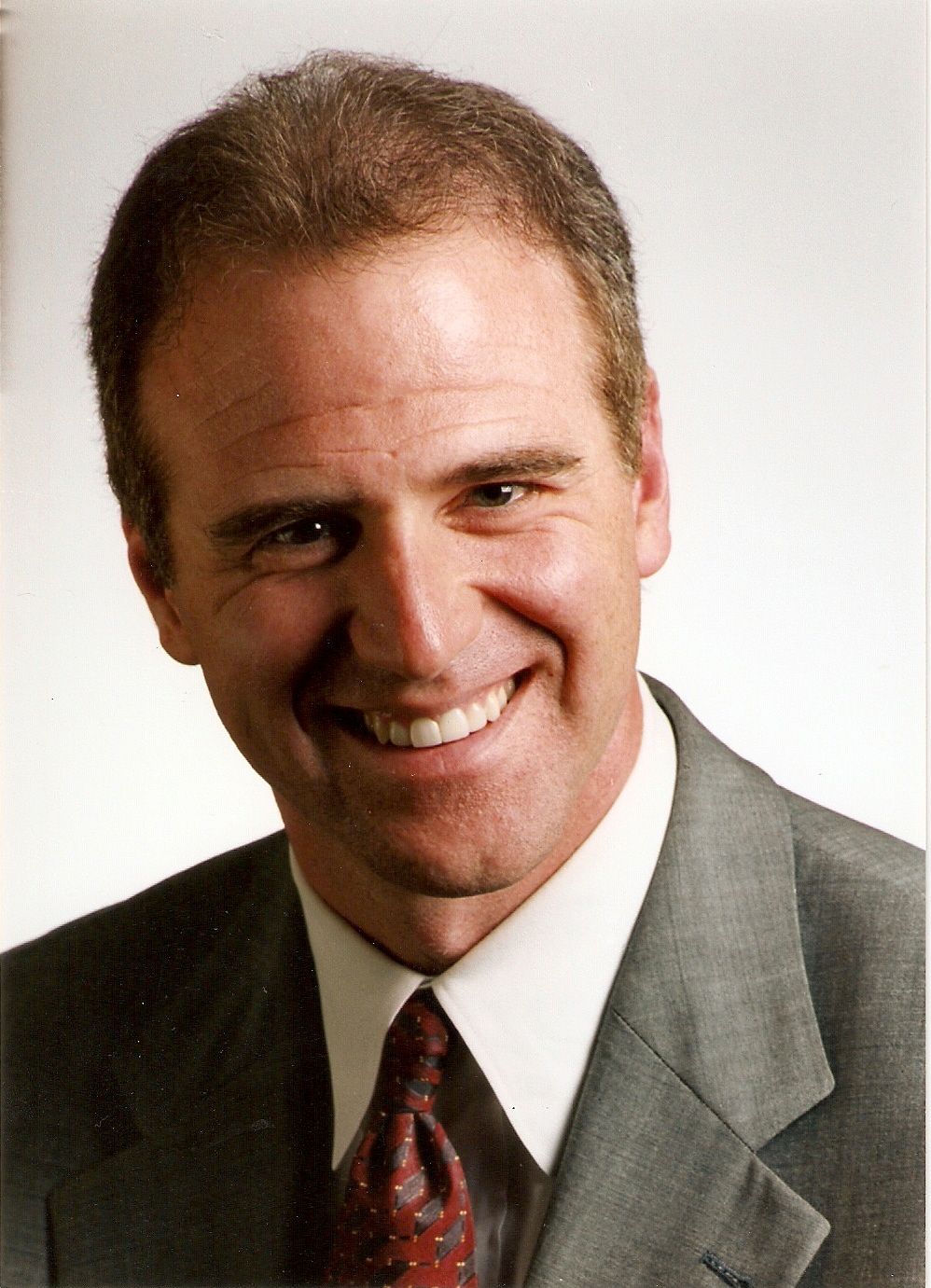Here are eight important spinal technology advances heading into next year.
1. Artificial discs. Much controversy circles around the future of artificial disc replacements. Lumbar disc replacements have not held up under scrutiny and researchers studying cervical disc replacements are just beginning to gather long term effectiveness data.
 "Lumbar disc replacement is dead in the water, but there is a lot we are still excited about with cervical disc replacement," says Andrew Hecht, MD, co-chief of orthopedic spine surgery at Mount Sinai School of Medicine in New York City. "Now we are seeing some evidence that in its current form, cervical artificial discs aren't preventing adjacent segment disease as we had hoped. Cervical fusion is such a successful procedure that the key is really going to be whether disc replacement really does reduce the rates of adjacent segment disease."
"Lumbar disc replacement is dead in the water, but there is a lot we are still excited about with cervical disc replacement," says Andrew Hecht, MD, co-chief of orthopedic spine surgery at Mount Sinai School of Medicine in New York City. "Now we are seeing some evidence that in its current form, cervical artificial discs aren't preventing adjacent segment disease as we had hoped. Cervical fusion is such a successful procedure that the key is really going to be whether disc replacement really does reduce the rates of adjacent segment disease."
At this year's North American Spine Society annual meeting, studies presented compared cervical disc replacement and fusion procedures and showed minimal, if any, difference in adjacent segment disease. However, there are promising developments on the horizon for artificial discs.
"One of the shortcomings of the United States-approved lumbar discs is they do not incorporate shock absorption while some of the European ones do," says Donald Corenman, MD, a spine surgeon with The Steadman Clinic in Vail, Colo. "The currently available ball and cup disc replacements are not mechanically connected so there are no significant stresses created in the interface between the vertebral body bone and the implant itself. With a shock absorption type of disc, there is a strong mechanical connection between the two ingrowth endplates. This creates greater mechanical stress between the host bony endplate and the device. Longevity of the implant comes into question. Nonetheless, I think this will finally yield disc implants that are more acceptable for the lumbar spine."
currently available ball and cup disc replacements are not mechanically connected so there are no significant stresses created in the interface between the vertebral body bone and the implant itself. With a shock absorption type of disc, there is a strong mechanical connection between the two ingrowth endplates. This creates greater mechanical stress between the host bony endplate and the device. Longevity of the implant comes into question. Nonetheless, I think this will finally yield disc implants that are more acceptable for the lumbar spine."
Regardless of the method, surgeons are looking for ways to preserve motion in the spine and new developments in disc replacements may give patients more normal motion than in the past.
 "We continue to get closer to having actual metal and plastic options that really more closely mimic the movements and kinematics of the normal human cervical spine and disc," says Sheeraz Qureshi, MD, associate professor of spine surgery in the department of orthopedics and chief of trauma in at Mount Sinai School of Medicine in New York City. "We are getting longer term results on disc replacement options that are available, which have had excellent outcomes. We continue to improve the type of motion that is occurring and we are getting closer to the point where we can say we will have these devices to protect against adjacent segment disease."
"We continue to get closer to having actual metal and plastic options that really more closely mimic the movements and kinematics of the normal human cervical spine and disc," says Sheeraz Qureshi, MD, associate professor of spine surgery in the department of orthopedics and chief of trauma in at Mount Sinai School of Medicine in New York City. "We are getting longer term results on disc replacement options that are available, which have had excellent outcomes. We continue to improve the type of motion that is occurring and we are getting closer to the point where we can say we will have these devices to protect against adjacent segment disease."
2. Minimally invasive surgery for instrumentation and fusion. Minimally invasive techniques are now the standard of care for simpler procedures like decompressions and are gaining traction among instrumentations and fusions. While maverick surgeons have been performing these procedures for several years, more studies now show their effectiveness and the idea of minimally invasive spinal surgery has gone mainstream.
"Now that we have done this for quite some time, we are seeing a lot more papers discussing how effective minimally invasive surgery is compared to mini open techniques," says Dr. Hecht. "We are trying to figure out where these procedures will fit in and whether the differences are really enduring. For cervical foraminotomy and far lateral discectomies, the minimally invasive techniques are the gold standard; for spinal fusion, the jury is still out on whether it makes a difference."
For some procedures, such as transforaminal lumbar interbody fusions, the minimally invasive technique might shorten hospital stays by a day, but the patient might not achieve fusion as well as the mini open technique would have.
"We need to have a minimally invasive technique that will allow us to achieve as good of a fusion there," says Dr. Hecht.
3. Lateral access procedures. Device companies are increasingly developing instrumentation for lateral access techniques. These techniques allow surgeons to access several different areas of the spine through a minimally invasive approach.
"Initially, minimally invasive surgery was just percutaneous pedicle screw placement, but as things evolved we were able to do more TLIFs and fusions, and now we are seeing the increased popularity of direct lateral surgery," says Dr. Qureshi. "The next thing on the horizon will be the ability to more safely access not only the L4-5 space through a minimally invasive direct lateral approach, but also the L5-S1. Before this area wasn't considered a space that could be accessed through those approaches, but if we are able to do that it would be a major advancement."
The lateral approach has also brought forth several new innovations n image guidance.
"We are very excited in the improvements in image guidance technology that allows us to do these less invasive procedures more safely because when you have an idea of where you are and how close you are to directly accomplishing the goals of surgery, you have better outcomes," says Dr. Qureshi. "We are seeing improved ability to navigate and access levels commonly involved in surgery that weren't possible even through lateral approaches before. In 2013, we will be introducing some new ways to do that."
4. Implant and instrumentation materials. Spinal instrumentation is constantly being refined based on the metal material, shape and technique. Every major manufacturer routinely updates their instrumentation and while the application of the instrumentation hasn't changed much, the metal material has.
 "There is a trend, in spinal deformity surgery, to use cobalt chrome for longer constructs. This is an evolution from stainless steel and titanium implants," says Purnendu Gupta, MD, medical director of the Chicago Spine Center at Weiss Memorial Hospital. "Now we can use a combination of titanium screw implants with cobalt chrome rods. The advantage is that you have greater fatigue life than with titanium."
"There is a trend, in spinal deformity surgery, to use cobalt chrome for longer constructs. This is an evolution from stainless steel and titanium implants," says Purnendu Gupta, MD, medical director of the Chicago Spine Center at Weiss Memorial Hospital. "Now we can use a combination of titanium screw implants with cobalt chrome rods. The advantage is that you have greater fatigue life than with titanium."
Cobalt chrome also has greater resistance to infection than stainless steel, which is important particularly in long constructs. However, more data should be gathered to really assess theses benefits. Another material on the rise is Amedica's patented Silicon Nitride, which is a heat resistant material that can be manufactured into different forms — either very dense or very porous with a highly polished or texturized surface — to accommodate different implant types.
"Silicon Nitride is certainly one of the most exciting new emerging technologies in the space," says Grant Skidmore, MD, a neurosurgeon at Neurosurgical Specialists in Norfolk, Va. "Silicon Nitride provides surgeons with another option for spinal implants, as it appears to be superior to both titanium and PEEK in its interaction with bone."
spinal implants, as it appears to be superior to both titanium and PEEK in its interaction with bone."
Two peer reviewed studies have show the benefits of Silicon Nitride, which also allows for intraoperative visualization.
5. Bone morphogenic protein. Medtronic's Infuse is currently the only FDA-approved bone morphogenic protein product available on the market for spinal fusion, with limited indications. Despite current controversy surrounding its use, many spine surgeons still find the product helpful for complex fusions, and further developments in bone morphogenic protein products could enhance the procedure over the next several years.
"BMP continues to remain useful in spine fusions, particularly in challenging environments where patients have significant comorbidities," says Dr. Gupta. "Perhaps in the future, there will be more research on the use of combinations of BMP — it's already being used with bone graft substitutes — but there are other BMPs beyond what is commercially available and they could be more effective in combination. The basic science research on combinations will continue to emerge over time."
For now, many companies are financially limited in their research and development on bone morphogenic protein material. In the near future, researchers and device companies may take steps to define the appropriate use of BMP material currently on the market.
"I think over the next year, we will see what the best and most appropriate role for BMP is," says Dr. Hecht. "I don't think it will go away and it shouldn't."
6. Biologic treatment and disc regeneration. Some research is being done now on biologic alternatives to BMP that would promote fusion and potentially enhance disc regeneration in the distant future. These solutions include stem cell research and other types of biologic material.
"We are still looking for biologic treatment for both fusion and disc regeneration, and I don't think we are any closer to finding a solution," says Dr. Qureshi. "I don't think there are great things on the horizon for the upcoming year, but that will be the next space where a lot of research and resources will be devoted."
While BMP has powerful bone forming and fusion forming abilities, there are some issues with the substance that are causing surgeons to reach for an alternative that is just as effective. In disc regeneration, no material is pervasive yet.
"We are working for the point where we will have these things that are injectable and promote disc regeneration and healing for the patients so they will avoid the need for surgery," says Dr. Qureshi.
7. Growth tethers. For children with juvenile scoliosis, growing rods have been developed to allow growth and delay spinal fusion procedures. For early onset scoliosis, surgeons can do serial casting with some success as well. However, there is an opportunity to further modulate spinal growth with a device known as a growth tether.
"We are seeing the development of growth modulation in addition to growing rods," says Dr. Gupta. "Growth tethers are still on the horizon and hopefully will emerge as effective adjuncts to growing rods. Several companies are developing growth tethers which are being used in animal research. At the moment, none are commercially available, but they will probably emerge in the near future."
For children needing a fusion for treatment of scoliosis, surgeons are also looking at how the length of fusion may impact residual spinal motion. In some cases, surgeons are ending their fusion at L3 instead of L4 for motion preservation. Dr. Gupta is participating in a study being done in collaboration with Drs. Hammerberg and Harris at Shriners Hospital which currently includes two year data and will be followed up at five years.
"We see there is a dramatic change in the patients' motion if we stop a scoliosis fusion at L2 versus L3 or L4," says Dr. Gupta. "It will be interesting to see the follow-up at five years to know whether the motion is maintained or will change. We'll know the impact of longer fusions at the five-year mark in the pediatric population."
8. Image guidance technology. Enhance imaging technology available with the O-arm is now starting to gain traction among mainstream spine surgeons and could become the standard of care in the near future. An O-arm helps spine surgeons with screw placement and many have found this technology particularly useful during revision surgeries or with patients who have more complex degeneration.
"The O-arm allows for accurate implant placement so we don't have to worry about screw placement issues," says Dr. Corenman. "It allows you to perform procedures that you normally might not contemplate because these procedures were too complex in the past. It also substantially reduces the exposure of surgeons and staff to radiation when compared with standard C-arm technology."
The O-arm has developed into a useful tool for training younger surgeons in their fellowships because the fellows can place screws without viewing the stealth monitor, but the experienced surgeon can watch the monitor to see if the screws are in the right place.
"We've had the ability to make three-dimensional guidance in the operating room for some time but it has never been user-friendly," says Dr. Qureshi. "There were always problems with little movements that threw off the entire navigation in the past. With newer technologies, we overcame that and can navigate very predictably."
Newer technology can also save operating time. "For the navigational surgery, you just take a one-time three dimensional image and you don't have to take an X-ray for the rest of the time," says Dr. Qureshi. "It goes a long way for long term safety. There is also a fatigue factor because surgeons don't have to wear heavy led aprons during surgery."
More Articles on Spinal Technology:
10 Device Company Partnerships & Acquisitions
Medical Device Industry: 3 Ongoing Challenges
5 Spine Device Company 3Q Financial Reports
1. Artificial discs. Much controversy circles around the future of artificial disc replacements. Lumbar disc replacements have not held up under scrutiny and researchers studying cervical disc replacements are just beginning to gather long term effectiveness data.
 "Lumbar disc replacement is dead in the water, but there is a lot we are still excited about with cervical disc replacement," says Andrew Hecht, MD, co-chief of orthopedic spine surgery at Mount Sinai School of Medicine in New York City. "Now we are seeing some evidence that in its current form, cervical artificial discs aren't preventing adjacent segment disease as we had hoped. Cervical fusion is such a successful procedure that the key is really going to be whether disc replacement really does reduce the rates of adjacent segment disease."
"Lumbar disc replacement is dead in the water, but there is a lot we are still excited about with cervical disc replacement," says Andrew Hecht, MD, co-chief of orthopedic spine surgery at Mount Sinai School of Medicine in New York City. "Now we are seeing some evidence that in its current form, cervical artificial discs aren't preventing adjacent segment disease as we had hoped. Cervical fusion is such a successful procedure that the key is really going to be whether disc replacement really does reduce the rates of adjacent segment disease."At this year's North American Spine Society annual meeting, studies presented compared cervical disc replacement and fusion procedures and showed minimal, if any, difference in adjacent segment disease. However, there are promising developments on the horizon for artificial discs.
"One of the shortcomings of the United States-approved lumbar discs is they do not incorporate shock absorption while some of the European ones do," says Donald Corenman, MD, a spine surgeon with The Steadman Clinic in Vail, Colo. "The
 currently available ball and cup disc replacements are not mechanically connected so there are no significant stresses created in the interface between the vertebral body bone and the implant itself. With a shock absorption type of disc, there is a strong mechanical connection between the two ingrowth endplates. This creates greater mechanical stress between the host bony endplate and the device. Longevity of the implant comes into question. Nonetheless, I think this will finally yield disc implants that are more acceptable for the lumbar spine."
currently available ball and cup disc replacements are not mechanically connected so there are no significant stresses created in the interface between the vertebral body bone and the implant itself. With a shock absorption type of disc, there is a strong mechanical connection between the two ingrowth endplates. This creates greater mechanical stress between the host bony endplate and the device. Longevity of the implant comes into question. Nonetheless, I think this will finally yield disc implants that are more acceptable for the lumbar spine."Regardless of the method, surgeons are looking for ways to preserve motion in the spine and new developments in disc replacements may give patients more normal motion than in the past.
 "We continue to get closer to having actual metal and plastic options that really more closely mimic the movements and kinematics of the normal human cervical spine and disc," says Sheeraz Qureshi, MD, associate professor of spine surgery in the department of orthopedics and chief of trauma in at Mount Sinai School of Medicine in New York City. "We are getting longer term results on disc replacement options that are available, which have had excellent outcomes. We continue to improve the type of motion that is occurring and we are getting closer to the point where we can say we will have these devices to protect against adjacent segment disease."
"We continue to get closer to having actual metal and plastic options that really more closely mimic the movements and kinematics of the normal human cervical spine and disc," says Sheeraz Qureshi, MD, associate professor of spine surgery in the department of orthopedics and chief of trauma in at Mount Sinai School of Medicine in New York City. "We are getting longer term results on disc replacement options that are available, which have had excellent outcomes. We continue to improve the type of motion that is occurring and we are getting closer to the point where we can say we will have these devices to protect against adjacent segment disease."2. Minimally invasive surgery for instrumentation and fusion. Minimally invasive techniques are now the standard of care for simpler procedures like decompressions and are gaining traction among instrumentations and fusions. While maverick surgeons have been performing these procedures for several years, more studies now show their effectiveness and the idea of minimally invasive spinal surgery has gone mainstream.
"Now that we have done this for quite some time, we are seeing a lot more papers discussing how effective minimally invasive surgery is compared to mini open techniques," says Dr. Hecht. "We are trying to figure out where these procedures will fit in and whether the differences are really enduring. For cervical foraminotomy and far lateral discectomies, the minimally invasive techniques are the gold standard; for spinal fusion, the jury is still out on whether it makes a difference."
For some procedures, such as transforaminal lumbar interbody fusions, the minimally invasive technique might shorten hospital stays by a day, but the patient might not achieve fusion as well as the mini open technique would have.
"We need to have a minimally invasive technique that will allow us to achieve as good of a fusion there," says Dr. Hecht.
3. Lateral access procedures. Device companies are increasingly developing instrumentation for lateral access techniques. These techniques allow surgeons to access several different areas of the spine through a minimally invasive approach.
"Initially, minimally invasive surgery was just percutaneous pedicle screw placement, but as things evolved we were able to do more TLIFs and fusions, and now we are seeing the increased popularity of direct lateral surgery," says Dr. Qureshi. "The next thing on the horizon will be the ability to more safely access not only the L4-5 space through a minimally invasive direct lateral approach, but also the L5-S1. Before this area wasn't considered a space that could be accessed through those approaches, but if we are able to do that it would be a major advancement."
The lateral approach has also brought forth several new innovations n image guidance.
"We are very excited in the improvements in image guidance technology that allows us to do these less invasive procedures more safely because when you have an idea of where you are and how close you are to directly accomplishing the goals of surgery, you have better outcomes," says Dr. Qureshi. "We are seeing improved ability to navigate and access levels commonly involved in surgery that weren't possible even through lateral approaches before. In 2013, we will be introducing some new ways to do that."
4. Implant and instrumentation materials. Spinal instrumentation is constantly being refined based on the metal material, shape and technique. Every major manufacturer routinely updates their instrumentation and while the application of the instrumentation hasn't changed much, the metal material has.
 "There is a trend, in spinal deformity surgery, to use cobalt chrome for longer constructs. This is an evolution from stainless steel and titanium implants," says Purnendu Gupta, MD, medical director of the Chicago Spine Center at Weiss Memorial Hospital. "Now we can use a combination of titanium screw implants with cobalt chrome rods. The advantage is that you have greater fatigue life than with titanium."
"There is a trend, in spinal deformity surgery, to use cobalt chrome for longer constructs. This is an evolution from stainless steel and titanium implants," says Purnendu Gupta, MD, medical director of the Chicago Spine Center at Weiss Memorial Hospital. "Now we can use a combination of titanium screw implants with cobalt chrome rods. The advantage is that you have greater fatigue life than with titanium."Cobalt chrome also has greater resistance to infection than stainless steel, which is important particularly in long constructs. However, more data should be gathered to really assess theses benefits. Another material on the rise is Amedica's patented Silicon Nitride, which is a heat resistant material that can be manufactured into different forms — either very dense or very porous with a highly polished or texturized surface — to accommodate different implant types.
"Silicon Nitride is certainly one of the most exciting new emerging technologies in the space," says Grant Skidmore, MD, a neurosurgeon at Neurosurgical Specialists in Norfolk, Va. "Silicon Nitride provides surgeons with another option for
 spinal implants, as it appears to be superior to both titanium and PEEK in its interaction with bone."
spinal implants, as it appears to be superior to both titanium and PEEK in its interaction with bone."Two peer reviewed studies have show the benefits of Silicon Nitride, which also allows for intraoperative visualization.
5. Bone morphogenic protein. Medtronic's Infuse is currently the only FDA-approved bone morphogenic protein product available on the market for spinal fusion, with limited indications. Despite current controversy surrounding its use, many spine surgeons still find the product helpful for complex fusions, and further developments in bone morphogenic protein products could enhance the procedure over the next several years.
"BMP continues to remain useful in spine fusions, particularly in challenging environments where patients have significant comorbidities," says Dr. Gupta. "Perhaps in the future, there will be more research on the use of combinations of BMP — it's already being used with bone graft substitutes — but there are other BMPs beyond what is commercially available and they could be more effective in combination. The basic science research on combinations will continue to emerge over time."
For now, many companies are financially limited in their research and development on bone morphogenic protein material. In the near future, researchers and device companies may take steps to define the appropriate use of BMP material currently on the market.
"I think over the next year, we will see what the best and most appropriate role for BMP is," says Dr. Hecht. "I don't think it will go away and it shouldn't."
6. Biologic treatment and disc regeneration. Some research is being done now on biologic alternatives to BMP that would promote fusion and potentially enhance disc regeneration in the distant future. These solutions include stem cell research and other types of biologic material.
"We are still looking for biologic treatment for both fusion and disc regeneration, and I don't think we are any closer to finding a solution," says Dr. Qureshi. "I don't think there are great things on the horizon for the upcoming year, but that will be the next space where a lot of research and resources will be devoted."
While BMP has powerful bone forming and fusion forming abilities, there are some issues with the substance that are causing surgeons to reach for an alternative that is just as effective. In disc regeneration, no material is pervasive yet.
"We are working for the point where we will have these things that are injectable and promote disc regeneration and healing for the patients so they will avoid the need for surgery," says Dr. Qureshi.
7. Growth tethers. For children with juvenile scoliosis, growing rods have been developed to allow growth and delay spinal fusion procedures. For early onset scoliosis, surgeons can do serial casting with some success as well. However, there is an opportunity to further modulate spinal growth with a device known as a growth tether.
"We are seeing the development of growth modulation in addition to growing rods," says Dr. Gupta. "Growth tethers are still on the horizon and hopefully will emerge as effective adjuncts to growing rods. Several companies are developing growth tethers which are being used in animal research. At the moment, none are commercially available, but they will probably emerge in the near future."
For children needing a fusion for treatment of scoliosis, surgeons are also looking at how the length of fusion may impact residual spinal motion. In some cases, surgeons are ending their fusion at L3 instead of L4 for motion preservation. Dr. Gupta is participating in a study being done in collaboration with Drs. Hammerberg and Harris at Shriners Hospital which currently includes two year data and will be followed up at five years.
"We see there is a dramatic change in the patients' motion if we stop a scoliosis fusion at L2 versus L3 or L4," says Dr. Gupta. "It will be interesting to see the follow-up at five years to know whether the motion is maintained or will change. We'll know the impact of longer fusions at the five-year mark in the pediatric population."
8. Image guidance technology. Enhance imaging technology available with the O-arm is now starting to gain traction among mainstream spine surgeons and could become the standard of care in the near future. An O-arm helps spine surgeons with screw placement and many have found this technology particularly useful during revision surgeries or with patients who have more complex degeneration.
"The O-arm allows for accurate implant placement so we don't have to worry about screw placement issues," says Dr. Corenman. "It allows you to perform procedures that you normally might not contemplate because these procedures were too complex in the past. It also substantially reduces the exposure of surgeons and staff to radiation when compared with standard C-arm technology."
The O-arm has developed into a useful tool for training younger surgeons in their fellowships because the fellows can place screws without viewing the stealth monitor, but the experienced surgeon can watch the monitor to see if the screws are in the right place.
"We've had the ability to make three-dimensional guidance in the operating room for some time but it has never been user-friendly," says Dr. Qureshi. "There were always problems with little movements that threw off the entire navigation in the past. With newer technologies, we overcame that and can navigate very predictably."
Newer technology can also save operating time. "For the navigational surgery, you just take a one-time three dimensional image and you don't have to take an X-ray for the rest of the time," says Dr. Qureshi. "It goes a long way for long term safety. There is also a fatigue factor because surgeons don't have to wear heavy led aprons during surgery."
More Articles on Spinal Technology:
10 Device Company Partnerships & Acquisitions
Medical Device Industry: 3 Ongoing Challenges
5 Spine Device Company 3Q Financial Reports


